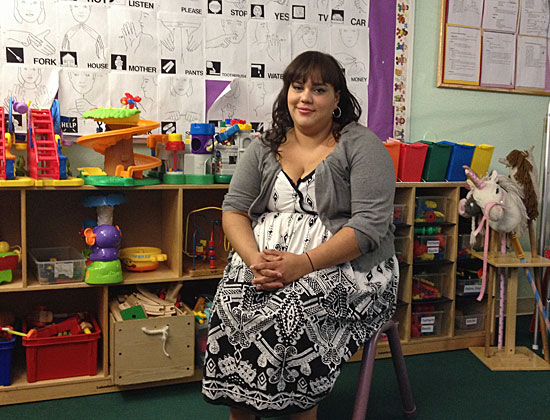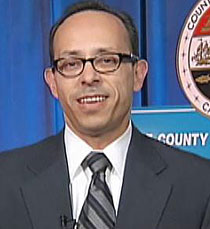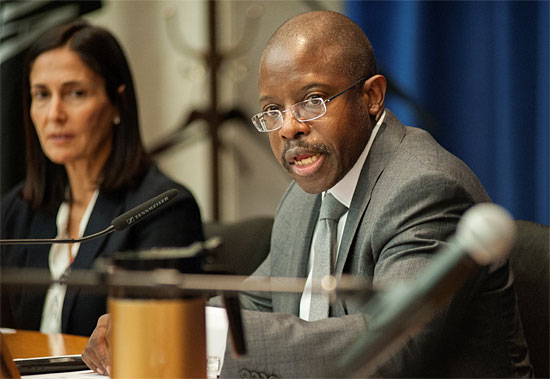Helping homeless families heal

At Via Avanta, once homeless moms like Gabriele Gonzalez are putting their lives back together.
Gabriele Gonzalez was living a hard life last winter. She was homeless and addicted to methamphetamine, sleeping in parks and abandoned buildings, unsure where she’d find her next meal.
Today, she’s headed in a dramatically different direction. She lives in a comfortable room in a freshly-refurbished residential treatment center, has a new job in customer service, and is looking forward to a possible reunion with the three children—aged 6, 8 and 10—who were taken away from her when she was at her lowest point.
Her transformation has not been a solo voyage. Crucial assistance is coming from the Via Avanta Residential Center in Pacoima, where a pilot program called “Project 60: Women and Children” is underway to help homeless women, particularly mothers, with serious mental illnesses.
The program marks the latest extension of Project 50, a pioneering “permanent supportive housing” program launched by Los Angeles County in 2007. It provided 50 of the most vulnerable homeless people on Skid Row with housing first, and then surrounded them with mental healthcare, substance abuse treatment and other services. Project 50-style programs have since expanded to assist nearly 1,000 people across the county, said Mary Marx, who oversaw the initial effort for the Department of Mental Health. The initial investment paid off, too—saving $4,774 per person over the first two years by keeping them out of jails and emergency rooms. And the model has spread to cities including Denver, San Francisco and Washington, D.C.
And, of course, to Pacoima, where for many in the women’s pilot program, the well-being of their children serves as a powerful motivator to turn things around.
“I had lost apartments, cars and jobs before, but I had never lost my kids,” said Gonzalez, 29, whose son and two daughters were removed last November by the Los Angeles County Department of Children and Family Services and placed with relatives. “When they got taken, I lost a big part of me. I couldn’t imagine having them grow up with the idea that I didn’t fight for them.”
At a court date last January, Gonzalez realized that she was running out of time to get her kids back. Motivated to take action, she turned to a list of help numbers provided by DCFS and decided to call Via Avanta, which is run by Didi Hirsch Mental Health Services. She moved in on February 5, 2014.
Kita Curry, president and CEO of Didi Hirsch, said that having children involved presents special challenges and raises the stakes of the housing program.
“We’re not just helping an individual get their life together; we’re helping a family get their future together,” Curry said. “Otherwise, these kids would be at risk of trouble at school, getting in bad relationships and repeating the cycle.”
Supervisor Zev Yaroslavsky—an early supporter and pioneer of the housing-first approach—identified $542,000 in 3rd District homelessness funding to refurbish one of two residential buildings at Via Avanta last year. Last month, he directed an additional $1.7 million to the facility to redo the second building.
Though only a year old, the women’s program already is making a difference. It has served 39 women since the beginning of 2014. All were homeless and suffered from severe mental illness. Many also came with substance abuse disorders. Some, like Gonzalez, no longer had custody of their children. Others were admitted with children in tow. So far, 16 have been discharged and 23 remain in treatment. Of those discharged, 88% went on to live in supportive housing or with spouses, family and friends. Half moved out with their children and the others continue to work toward reunification.
Unlike Project 50—which dealt with single homeless people, most of them men—this program must consider the safety of the children and the realities of parenting, Curry said. Raising kids can be stressful even without mental health issues and substance abuse challenges, so it’s important to ensure that the women can cope with those realities before they are discharged.
After moving in, Gonzalez felt an immediate sense of security knowing that her basic needs would be met. She began putting her life back together, piece by piece—going to group therapy sessions, working in the kitchen and attending classes on subjects such as parenting, safety, domestic violence and relapse prevention.
“At first I was very emotional,” Gonzalez said. “I would cry in every group. It was part of my healing process.”
After a month or so, Gonzalez was allowed to have visitors, but she first needed to mend the bridges she had burned with members of her ex-husband’s family, who have custody of her children. The kids now visit occasionally, and Gonzalez has tea parties, plays dress-up and reads to them. She’s seen them “about 10 or 11 times. I’ve had to sit back and be OK about the fact that I’m not going to get as many visits as other people, but I‘m doing what I can.”
In addition to working on mental health and substance abuse issues with counselors, she built a resume and did mock interviews at Chrysalis, a nonprofit employment agency that works with Via Avanta. After spending hours each day applying for jobs at the work center’s computers, three weeks ago she was hired to do customer service for online companies. She wakes at 4 a.m. each day to commute from Pacoima to her workplace in Glendale. In her spare time, Gonzalez plays piano and even sings in Via Avanta’s hallways. Her current favorite is “Someone Like You” by Adele.
Gonzalez is adamant about taking responsibility for her life, but, like many homeless women, she also must come to terms with a long series of youthful traumas, including rape, molestation and abuse. By 15 she was diagnosed with clinical depression. Married at 18, she spent the next 12 years in a troubled relationship and turned to drugs, she said, to deal with her inner pain.
At first, she was reluctant to accept help in coming to terms with her past.
“I guess I held that stigma that I’m crazy if I have to see a therapist,” Gonzalez said. “I was very anti-medication. But it made such a difference. The medication and therapy has helped me so much.”
Now she’s looking ahead to the new year. February looms as an important month. That’s when she expects to move from Via Avanta (the program is generally geared to short-term stays) and has a custody hearing scheduled on the 15th.
“Hopefully that will be the date that I reunite with my kids,” she said.
Someday, Gonzalez hopes to attend nursing school and help other women like herself, perhaps at a place like Via Avanta. But she doesn’t want to get ahead of herself. She planes to continue focusing on her mental health and substance abuse issues by staying in treatment and going to 12-step meetings.
“I’ve put in a lot of work but none of it would have been possible if I hadn’t come here,” Gonzalez said. “I’m looking at life in a new way. I love myself today.”
Posted 11/21/14











